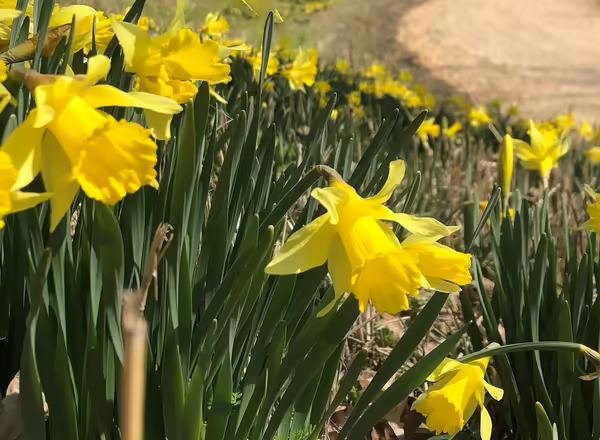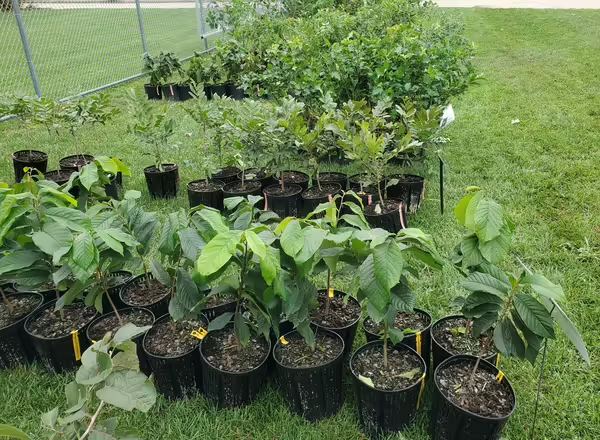
Fall is nearly upon us, and while many gardeners lament the end of the growing season, plenty of work remains to be done before winter sets in. I actually enjoy fall gardening tasks as they are a way to end the year with a bang and get all set to hit the ground running in spring. Here is a short list of the things I’m working on now in my home garden.
Divide Your Perennials
In the past few weeks, I have been actively dividing perennials. Fall is typically discussed as a great time to divide and replant many of our summer flowering plants (coneflower, daylilies, or peonies), but is also an excellent time for dividing the more hardy perennial plants regardless of bloom time, such as hostas.
Dividing plants can be essential in maintaining the health and quality of your perennial patch. By thinning out the stand it allows more light to reach individual stems, which promotes flower bud formation. It can also help to alleviate crowded roots while loosening up the soil and promoting an appropriate amount of well-spaced root system to support aboveground growth. Be sure to have quality soil on hand to backfill any holes you create while dividing so the remaining roots can flourish.


Just today, I placed an order for bulbs I will plant in the coming weeks. I just love this process of planting now, knowing that the payoff in spring blooms will brighten my beds early in the year. It is typically spring flowering bulbs that are planted now, such as daffodils, many alliums, crocus, and tulips, among others. The burst of color in springtime will also provide an early food source for pollinators, which can be especially important for our native bees.
While there are few native bulbs we plant this time of year (my list above is non-native), there are some early spring-flowering natives I’ve seen available in late summer or fall. Since the early spring bloomers are dormant now, virtually gone from forests and natural areas, some online suppliers ship dormant bare-root plants this time of year. Spring beauties and Dutchman’s breeches are a few, but there are certainly others that a quick internet search can turn up.
Like the bulbs above, these plants don’t provide much now but explode with color and pollinator food in springtime, which is really satisfying to see. In addition, many will self-seed and spread over the coming years, so you don’t need to purchase many if you have the patience to allow them time to establish in your garden beds.
Fall is an excellent time to plant garlic, which is also a bulb. Right now, I am ordering my garlic to ensure supplies don’t run out, but I won't plan to install it for a few weeks. I’ve found that mid-to-late October is the ideal time in central Illinois. You can read my previous blog to hear the whole scoop on garlic planting.


As you cleanup and prep your veggie garden for winter, now is an excellent time to plant cover crops. These beneficial plants provide excellent winter cover to protect and build soil. Many retailers offer ‘fall mixes’ which include a variety of species, making the selection for you. A few of my favorite single species to plant now are winter rye and crimson clover. The crimson clover will not disappoint if you allow it to flower in spring! For more information on planting cover crops, please visit the Midwest Cover Crops Council webpage and check out their Cover Crop Selector Tool. It's packed with great info on cover crops, including county-specific planting dates, a listing of benefits each cover crop provides, and more.
Finally, who can forget our woody plants in the fall? They are about to stage the grand finale of foliar displays as deciduous plants put on fall color. Resist that urge to prune too much now, as waiting for winter dormancy before pruning is typically best. However, dead limbs can be removed since they are especially easy to see before leaf drop. Hold off on any major pruning until the late winter.
For a variety of reasons, fall is an ideal time to plant trees and shrubs. I think of October as the height of fall color and the best time of year to plant a tree while enjoying the beauty around us and the crisp fall weather. Pick a day that is not sunny and hot. Your new tree will thank you since plant stress will be lowered, and it will save you some sweat.
Looking for that ideal native tree or shrub? The East Central Illinois Master Naturalists are currently hosting their Annual Native Tree and Shrub Sale, with ordering open until Oct 13. Check out all the details and our plant list at go.illinois.edu/Natives.